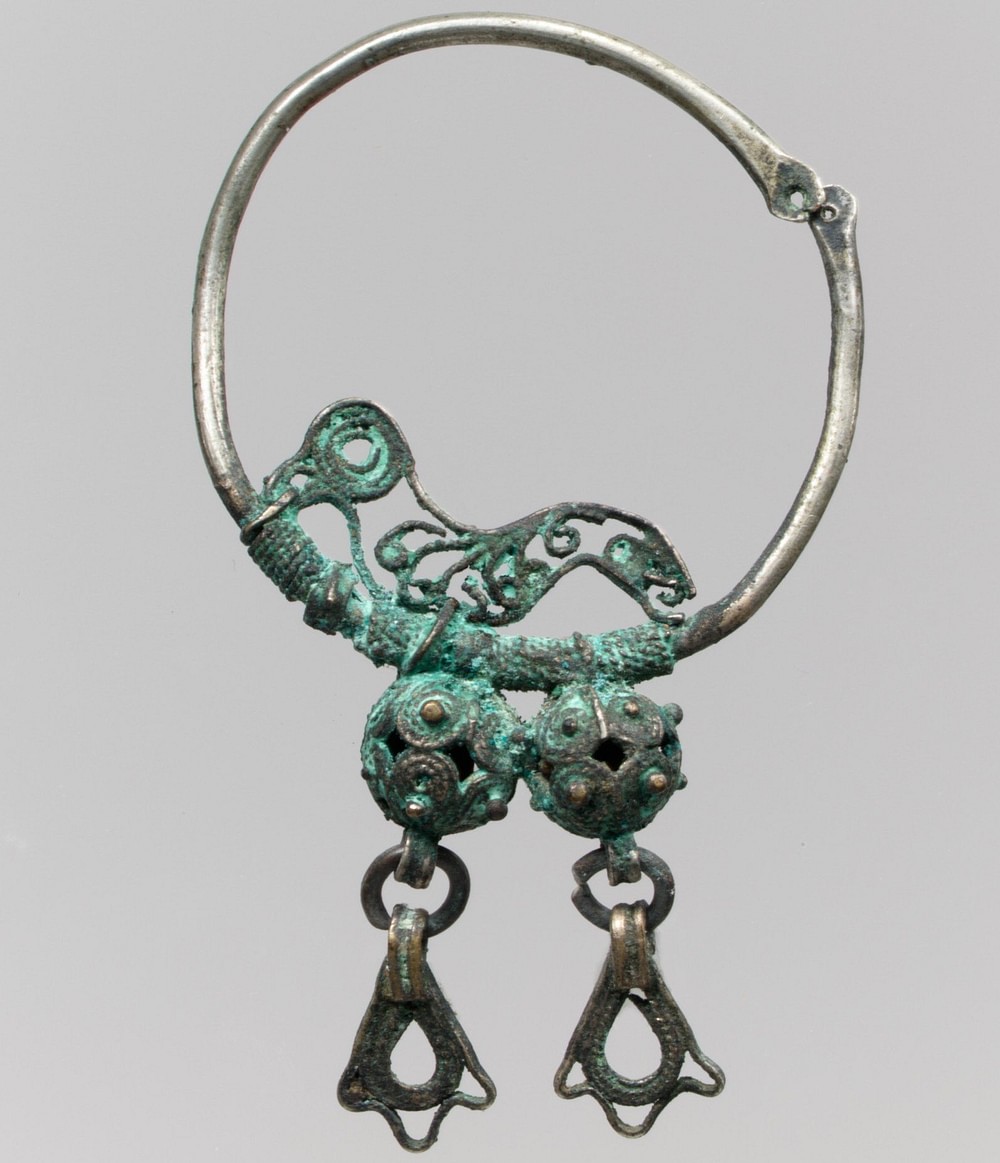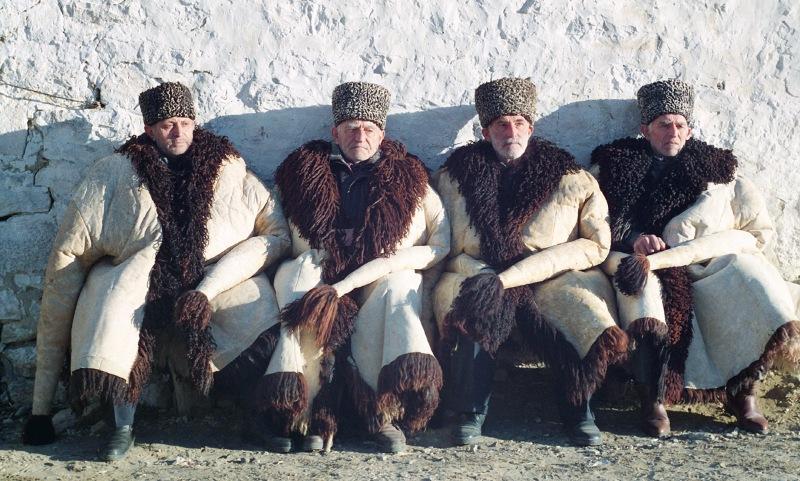Anthropology
Related: About this forumNew DNA Analysis Unravels the Marriage Practices of an Ancient Warrior People
Researchers examined over 400 skeletons to uncover secrets from the Avar empire
Julia Binswanger
Daily Correspondent
April 26, 2024 2:11 p.m.

A golden figure from the 7th century found at the Avar cemetery in Rákóczifalva, Hungary Damjanich János Museum, Szolnok
New DNA research is shedding light on the lifestyle of a warrior people called the Avars, a mysterious group who ruled much of Central and Eastern Europe around 1,500 years ago.
The Avars, once a nomadic people, migrated from Central Asia to Eastern Europe in the 6th century and conquered significant territories, including parts of present-day Hungary, Romania and Bulgaria. At one point, their fearsome empire almost took control of Constantinople
The new study, which appeared in the journal Nature on April 24, uses DNA analysis to map Avar family trees over the course of three centuries. The warrior culture left behind large grave sites with decorative tombs filled with weapons, jewelry and even horses. Experts were able to look at 424 skeletons in four different cemeteries in Hungary and learn more about Avar life.
“What surprised me most was the simple fact that these people in the cemeteries are so interconnected,” Zsófia Rácz, a study coauthor and researcher at Eötvös Loránd University’s Institute of Archaeological Sciences in Budapest, Hungary, tells CNN’s Katie Hunt.
More:
https://www.smithsonianmag.com/smart-news/new-dna-analysis-unravels-the-marriage-practices-of-an-ancient-warrior-people-180984239/
Judi Lynn
(163,984 posts)Using ancient DNA and archaeological evidence to unravel the kinship, social practices and transformations of early medieval steppe groups in Europe
Date:
April 24, 2024
Source:
Max Planck Institute for Evolutionary Anthropology
Summary:
A multidisciplinary research team has combined ancient DNA data with a clear archaeological, anthropological and historical context to reconstruct the social dynamics of Avar-period steppe descent populations that settled in Europe's Carpathian Basin in the 6th century.
A multidisciplinary research team led by scientists at the Max Planck Institute for Evolutionary Anthropology has combined ancient DNA data
with a clear archaeological, anthropological and historical context to reconstruct the social dynamics of Avar-period steppe descent populations that settled in Europe's Carpathian Basin in the 6th century. The study involved analysing entire communities by sampling all available human remains from four fully excavated Avar-era cemeteries, analysing a total of 424 individuals and discovering that around 300 had a close relative buried in the same cemetery.
This allowed the reconstruction of several extensive pedigrees, revealing that the communities practised a strict patrilineal system of descent. Women played a key role in promoting social cohesion, linking individual communities by marrying outside their original community. Changes within a site indicated community replacement, probably linked to political changes, showing that genetic continuity at the level of ancestry can mask the replacement of whole communities, with important implications for future archaeological and genetic research.
The Avars, who had come from Eastern Central Asia, ruled much of Eastern Central Europe for a quarter millennium, from the 6th to the 9th century CE. They may be less known than their less successful predecessors, the Huns. Yet in their cemeteries, they left one of the richest archaeological heritages in European history, including around 100,000 graves that have so far been excavated. From Avar funeral customs, and from written reports of their neighbours, scholars have reconstructed some of their social practices and ways of life. Yet now, archaeogenetics offer a totally new viewpoint on Avar communities who lived more than 1000 years ago. We can now analyse the ways in which individuals were related to each other up to the sixth to tenth degree.
By combining newly generated ancient DNA data with complementary archaeological, anthropological and historical information, a team of the multidisciplinary Synergy Grant research project HistoGenes funded by the European Research Council (ERC) has thus opened new ways to find out more about kinship patterns, social practices and population development in the distant past. The team includes researchers from the Max Planck Institute for Evolutionary Anthropology in Leipzig, Germany, together with Hungarian, Austrian and US research groups. In their collaboration, they set new standards by using all available methods, including the most advanced genetic and bio-informatic tools.
More:
https://www.sciencedaily.com/releases/2024/04/240424111518.htm
Judi Lynn
(163,984 posts)Definition
by Joshua J. Mark
published on 17 December 2014
The Avars were a confederation of heterogeneous (diverse or varied) people consisting of Rouran, Hephthalites, and Turkic-Oghuric races who migrated to the region of the Pontic Grass Steppe (an area corresponding to modern-day Ukraine, Russia, Kazakhstan) from Central Asia after the fall of the Asiatic Rouran Empire in 552 CE. They are considered by many historians to be the successors of the Huns in their way of life and, especially, mounted warfare. They settled in the Huns' former territory and almost instantly set upon a course of conquest. After they were hired by the Byzantine Empire to subdue other tribes, their king Bayan I (reigned 562/565-602 CE) allied with the Lombards under Alboin (reigned 560-572 CE) to defeat the Gepids of Pannonia and then took over the region, forcing the Lombards to migrate to Italy.

Avar earrings from the 8th-9th century CE.
The Avars eventually succeeded in establishing the Avar Khaganate, which encompassed a territory corresponding roughly to modern-day Austria, Hungary, Romania, Serbia, Bulgaria down to and including parts of Turkey. The departure of the Lombards for Italy in 568 CE removed another hostile people from Pannonia, enabling Bayan I to expand his territories with relative ease and found the empire which lasted until 796 CE, when the Avars were conquered by the Franks under Charlemagne.
Origins & Migration
The precise origin of the Avars (like that of the Huns) is debated, but many historians, such as Christoph Baumer, link them with the Rouran Khaganate of Mongolia, north of China. The Rouran Khaganate was overthrown by the Gokturks in 552 CE, and the people, led by the Xianbei Mongolians, fled west to escape their rule. This claim seems the most likely but is not accepted by all scholars. The Ju-Juan tribe of Mongolia allied themselves with the White Huns against the people known as the Toba (who were Turkish) in numerous engagements and established themselves as an empire in the Mongolian region c. 394 CE. This empire became known as the Rouran Khaganate, which fell to the Gokturks in 552 CE, shortly before the Avars appear in the Steppe c. 557 CE, and so Baumer, and those who agree with him, appear to be correct.
The first mention of the Avars in Roman history comes from Priscus of Panium in 463 CE, who mentions the Avars in connection with a tribe known as the Sabirs who appear to be a subset of the Huns. Priscus is one of the primary sources on the Huns (he met and dined with Attila in 448/449 CE while on a diplomatic mission) and took note of their activities following the death of Attila in 453 CE. The Hunnic Empire which Attila established was in the process of disintegrating at this time (c. 463 CE), beginning with the Hun defeat by Ardaric of the Gepids in 454 CE at the Battle of Nedao.
Following Nedao, other nations that had been subjugated by the Huns rose against them, and the Hunnic Empire was dismantled by 469 CE. Whether the Avars mentioned by Priscus are the same coalition as those who fled Mongolia in 552 CE is debated. Many of the so-called "barbarian" tribes mentioned by Roman writers (the Alemanni, for example) changed in ethnic make-up from the time they are first mentioned to their later references. Most likely, as historians such as Peter Heather and Denis Sinor claim, the latter Avars were a different group of the same name. The earlier Avars appear to be an established confederacy of the region, while the later Avars were refugees from Central Asia fleeing the Gokturks who, it seems, pursued them.
More:
https://www.worldhistory.org/Avars/

